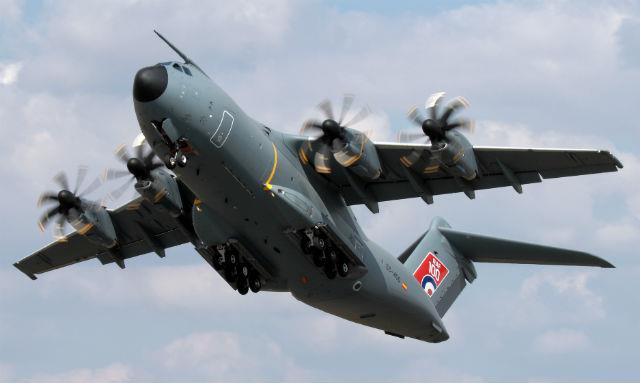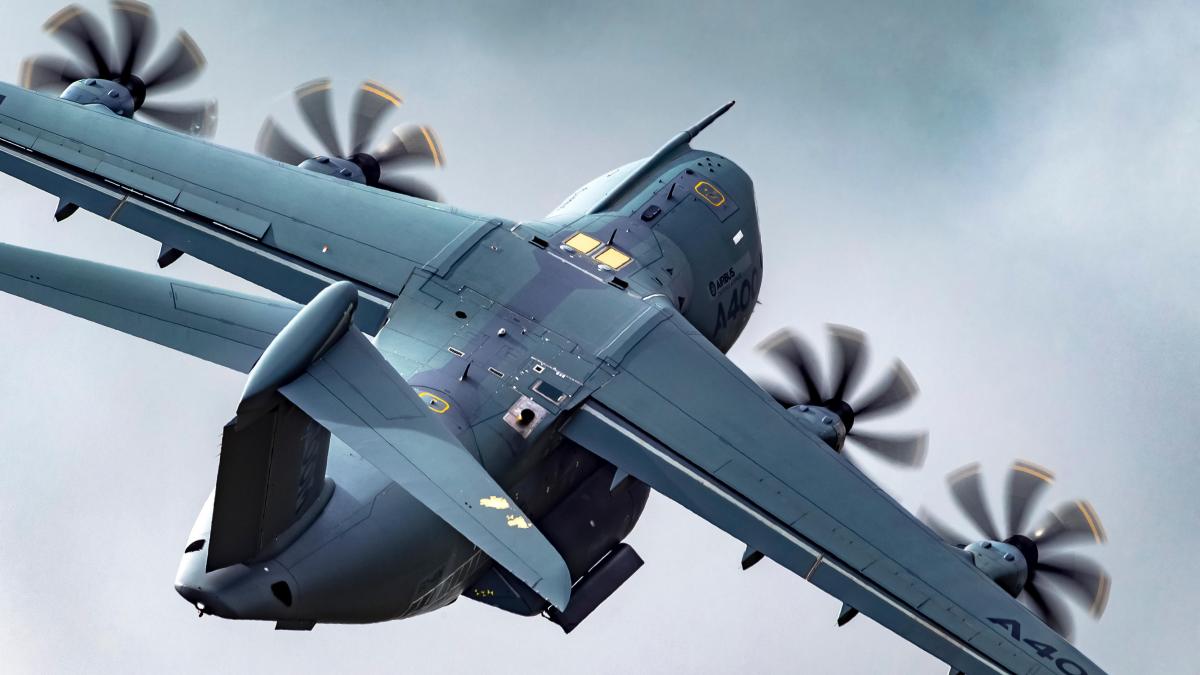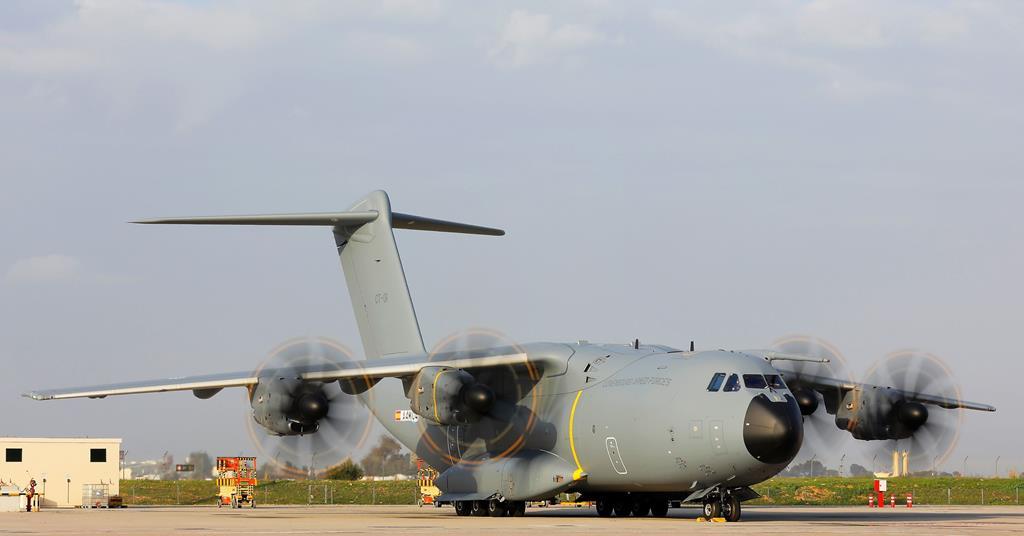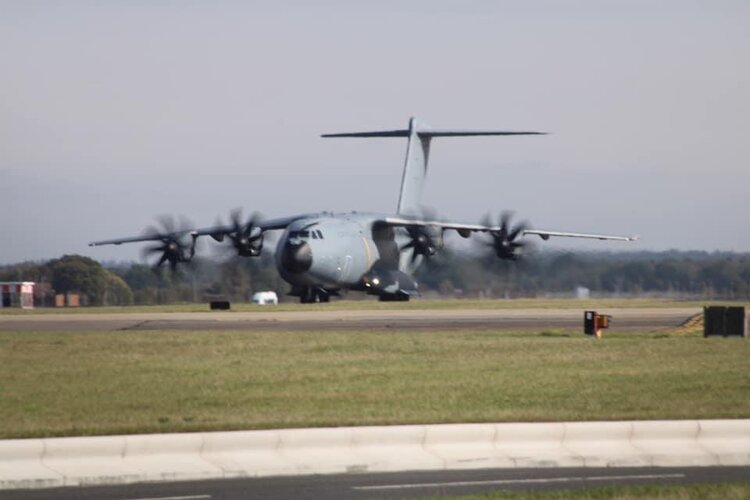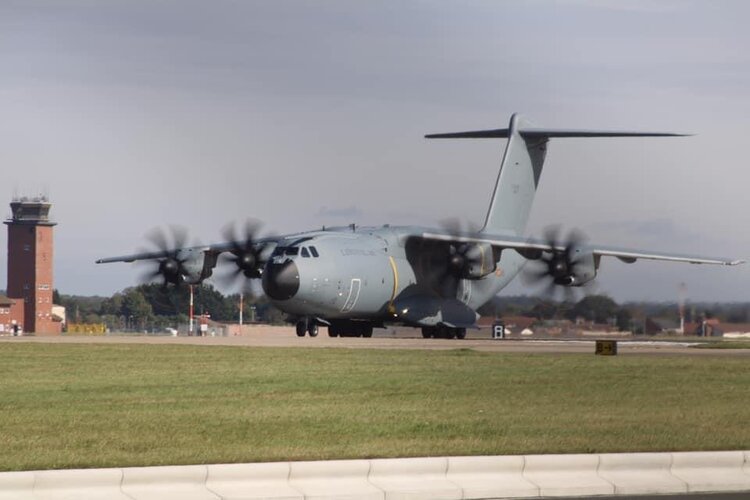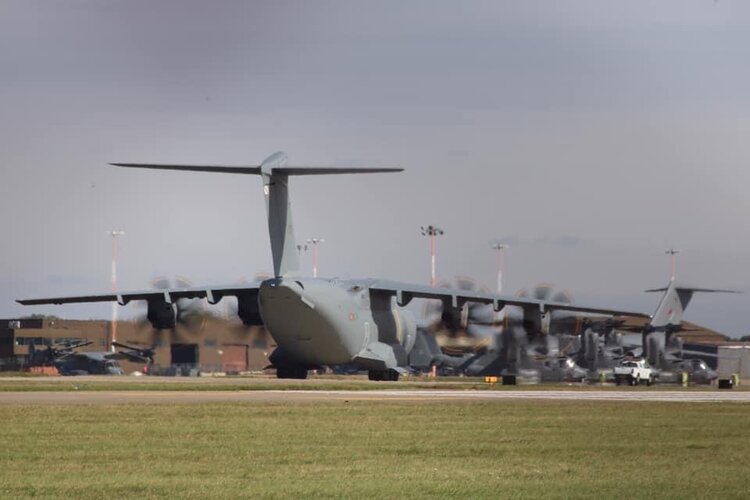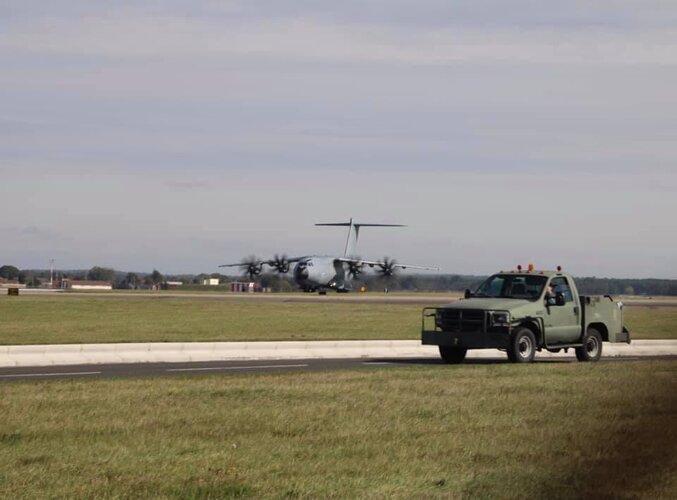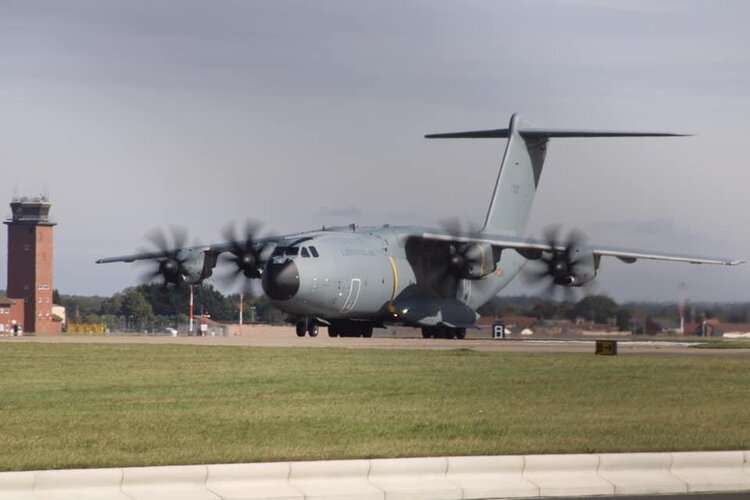- Joined
- 18 March 2008
- Messages
- 3,529
- Reaction score
- 982
RIP to the aircrew.
I was wondering about that as well. It definitely catches one's eye. Possibly scorch marks from fuel that spilled from the wreckage into the furrows in the field and burned? :-\Michel Van said:about those parallel burn marks on right of wreckage (see Picture in Deino post)
According latest news the A400M hit High voltage lines prior the crash
Es gebe einen Test, mit dem man zweifelsfrei klären könne, ob die Steuerungseinheit der Triebwerke den gleichen Fehler habe wie der Unglücksflieger, so ein Airbus-Sprecher zu SPIEGEL ONLINE
I've noticed that enthusiasm for automated control occurs most often among people who are outside the IT industry.
I am put in mind of the comment of a colleague many years ago. It has application far broader than the specifics he points to:
All of American [now world] business is critically dependent on millions of lines of computer code . . . written by people with no visible qualification to have done so.
Apply that to aircraft controls, or any other automated system, and you see the problem.
No offense to the people who write the computer code. But their priorities are, in every case I have seen in 4 decades in the business, focused primarily on other things: First, on completing something by the deadline (set, generally, with no reference to how complex the task is). And secondarily on including all of the functions demanded. Robustness, performance, allowing for unlikely combinations of inputs -- the folks writing the code are often professional enough to want to address those. But their management demands other priorities of them.
its systemic, the three shut downs would not be independently caused.pedrospe said:It is unbelievable,how could 3 engines fail like this,isn't there any safeguards on the software to prevent this from happening,isn't the pilot suppose to be immediately warn on the failure of one engine
regards
Pedro
this was now confirmed to the BBC.It said the focus of the inquiry was a theory that files known as "torque calibration parameters" had been accidentally deleted during a software installation process ahead of the plane's first flight.
Hobbes said:The software could use some checks to make sure the software and data files on board are valid and complete before relying on them.
Clearly the correspondent never worked on a flight controls team (and I've no reason to assume FADEC teams are any different, the quality requirements for safety critical software we work to are industry wide). We usually had more people trying to break the software than writing it. Every module of code had one set of people turning requirements into code, and another set of people turning that same requirement into a test harness to either confirm the requirement had been correctly implemented, or show it hasn't. And then another set of people working to demonstrate that module A and module B both still worked when combined together. We really don't work like the rest of the software industry, especially the non-real time, non-safety critical parts. By the time we've finished, every decision point in the code should have been tested at boundary values (decision coverage), every line of code confirmed to act correctly (code coverage). We even construct mathematical proofs of the software requirements and have that compiled and checked as an integral part of the development process - see 'design by contract'.Grey Havoc said:From the comments section of that article, a very pertinent comment:
No offense to the people who write the computer code. But their priorities are, in every case I have seen in 4 decades in the business, focused primarily on other things: First, on completing something by the deadline (set, generally, with no reference to how complex the task is). And secondarily on including all of the functions demanded. Robustness, performance, allowing for unlikely combinations of inputs -- the folks writing the code are often professional enough to want to address those. But their management demands other priorities of them.
The installation process should include a checksum calculation that confirms the software and data files installed on the aircraft are complete and as originally generated during the build and release process (I've done builds and releases across multiple projects). What that can't protect you against is someone loading the wrong data file. If you want the software to work with updateable data files, because you're using them to fine-tune performance without actually changing the software design, then you have to take it on trust that the data file being installed is correct for the current build of software and the current engine configuration (it was an error in matching software build and engine configuration that resulted in the loss of Eurofighter prototype DA6, IIRC). This sounds like an error on the flightline to me, though this kind of developmental installation might still be done by someone on the software team.Bill Walker said:On systems I'm familiar with there is a QA check to make sure the loaded software is a complete and accurate copy of a master file. But this assumes the master file is correct. This may be a QA failure further up the chain than the aircraft or the flight line.
UPDATED: Air Force Acquisition Head LaPlante Leaves Door Open For Airbus
PARIS AIR SHOW: The A400M can do things no C-130 can. It’s much bigger than a C-130. The air platform is reportedly incredibly stable in flight, raising the possibility of launching rockets from it or putting high accuracy guns on it.
But it’s got a few problems. First, it’s European. Second, much of the senior Airbus leadership remains deeply scarred by their experience with their last big American sales effort, the failed attempt to sell the Air Force the A330 tanker, first with Northrop Grumman and then through their American subsidiary, then called EADS, now known as Airbus Americas.
UPDATE BEGINS The door for a visit was — encouragingly — left wide open this afternoon by the head of Air Force acquisition, Bill LaPlante. “In general, when we talk to Airbus, we think the more the merrier in terms of getting industry to think about our missions,” he said. “We understand there’s the history with the tanker.” He noted that, “we’ve been trying to bring Airbus in to our CEO roundtables.” UPDATE ENDS
I heard last year that Airbus was hopeful of beginning the briefing process in the Pentagon, catching the ear of some Air Force or Special Operations Command leaders.
But few American fliers know anything about the A400M Grizzly. It’s much bigger than the C-130 since it was designed to give Europeans something they didn’t have: strategic lift. It can carry big loads a long way. For example, the French military can now fly a helicopter to the fight aboard an A400M instead of shipping it in pieces and reassembling it.
But an A400M crashed in May, killing four crew members. Incorrectly installed flight software was found to be the cause. This morning, with French President Francoise Hollande watching. an A400M soared over the field at Le Bourget Airport, completing some combat climbs and sharp turns to demonstrate the plane is back and remains safe.
Now the company must decide the benefits and risks of bringing an A400M or two to the United States to show off its impressive capabilities. Will American lawmakers reflexively oppose a European plane, even one from an ally as staunch as France has been since 9/11? The Army is buying the Lakota helicopter from Airbus Military. In fact, the Lakota is on display in the American corral here at the show.
If I were an Airbus executive and wanted to test the market, I couldn’t think of a better way to do it than bringing the A400M to America for a week or two and showing off its capabilities — especially to SOCOM. We’ll see what they decide.
Frankfurt (AFP) - European aircraft maker Airbus believes the United States will be the biggest customer for its A400M military transport plane, despite a fatal crash involving one of them during a test flight last month.
"By the next decade at the latest, the US armed forces will be the biggest customer for the aircraft," Airbus chief executive Tom Enders told the weekly magazine WirtschaftsWoche in an interview.
Despite its current technical problems, there was no other rival product at the moment, Enders argued.
Boeing's C-17 was larger and Lockheed Martin's C-130 was smaller.
"But a lot of countries don't want either extreme. For the next few years, there will only be one alternative, the A400M, which is also a lot more fuel-efficient and more versatile," he said.
An A400M plane crashed during a test on May 9 near Seville in Spain, killing four of the six people on board and seriously injuring the two others.
The A400M, a large, propeller-driven transport aircraft, was launched in 2003 and is assembled in Seville. But Britain, Germany, Turkey, Malaysia and Spain grounded their A400M planes after the crash.
An initial analysis of the black boxes revealed that three of the aircraft's four engines failed, Airbus has said.
Enders said Airbus was sticking to its sales and earnings targets for this year, despite the crash.
"We're on the right path to achieve our published goals for 2015," the CEO said.
Airbus is looking to increase both sales and earnings this year.
"In 2014, our operating profit was four billion euros on sales of 60 billion euros," he said. Cash flow was positive, at 88 million euros, compared with a negative cash flow of around one billion euros in 2013.
Turning to the possibility of upgrading its super jumbo A380, Enders said a decision would be reached by the end of this year.
"The administrative board will need until the end of the year to get a full picture of the situation and to reach a decision," Enders said.
"It is one of the most difficult product decisions of the last few years. But it's clear: there won't be an A380 with new engines for just one customer."
Dubai's Emirates Airline in particular is pushing for a more fuel-efficient variant of the superjumbo.
Enders said Airbus had succeeded in reducing fuel consumption of the A380 by several percent even without the engines.
"One option I'm concretely thinking about would be innovations in the cabin," he said, adding that new engines would be one of a number of possible engines.
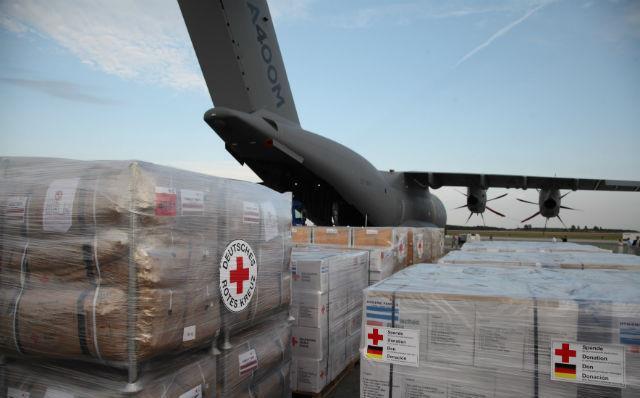
The company, which has struggled for years with the development and production of the A400M program, has suffered new problems with a component of the plane’s engine. Mr. Enders said the issue was “a serious challenge” and called it “very frustrating.”
The program’s problems have ranged from the aircraft’s large turbo-propeller engine to some of its complex systems, having put the program years behind schedule and billions of dollars over cost. Airbus last year booked a €290 million charge on the project following the first crash of an A400M in Spain, which killed four of six company employees on board. The company previously had reshuffled management to right the project.
Mr. Wilhelm said the situation with the A400M is less severe now than several years ago when there was a risk the program could be abandoned. He said the chance of plane cancellations by customers was “very remote.”
The company had targeted at least 20 deliveries of the planes this year, but Mr. Wilhelm said the figure was currently uncertain.
The European plane maker has secured 174 orders for the A400M, with Malaysia the only customer beyond a group of six European countries and Turkey backing its development. Without additional deals, Airbus will lose money on the project, the company has said.
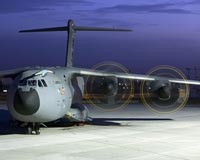

Airbus has written off another €1.3bn (£1.2bn) on its troubled A400M military transport plane, bringing total losses on the project to more than €8bn.

